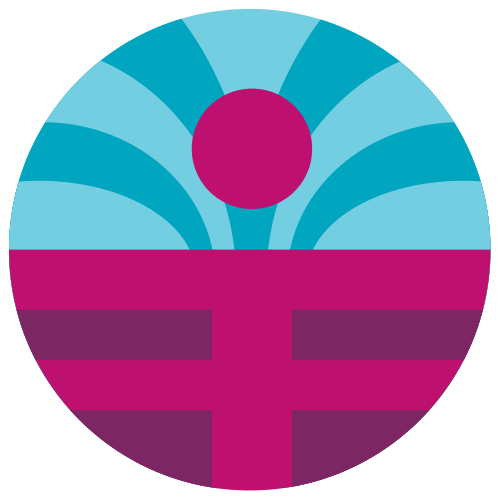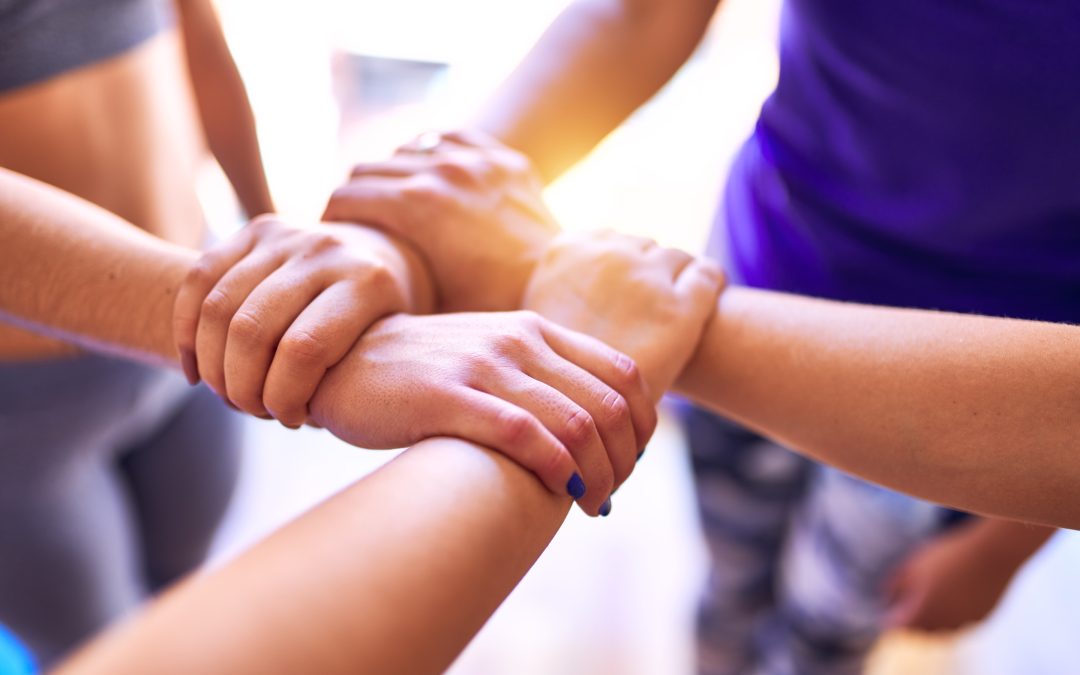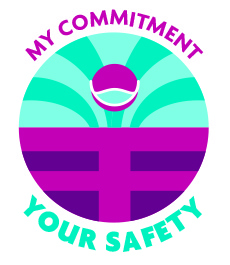Usually when people think of their health care team they think of their general practitioner, their dentist, their OB/Gyn or proctologist and maybe their orthopedic surgeon. But what do you do for the rest of your body’s needs? What do you do about the odd and varying aches and pains that don’t seem to qualify for a doctor’s appointment? What do you do if you’ve had surgery and physical therapy which you’ve been released from and still feel off?
According to the Massage Therapy Industry Fact Sheet posted on the American Massage Therapy Association’s website: “In 2021, 63% of consumers who got a massage for health and wellness reasons stated it was part of a treatment plan from a doctor or medical provider.” So, there is a tremendous amount of support from the medical community that alternative care, such as massage therapy, can be beneficial as part of a treatment plan for various injuries and conditions, but the medical community is just a small part of why people get, and can benefit from, massage therapy. Yet still, it’s not necessarily thought to be an obvious part of a wellness plan for most Americans.
Many people are pro-active about exercising in one form or another, and that’s great, except that we carry our biomechanics into every physical activity we engage in and when we have an injury (which is part of the game of life for most people) we usually repeat the same neurologically patterned physical habits that either led to the injury or re-irritate it. This makes it more difficult for the body to heal well. What then?
From my experience treating clients and patients in varying stages of pain, injury and rehabilitation, in all settings; high end spas, injury rehabilitation and wellness centers and private practice, I’ve seen exactly that. People learn their professions, they often specialize in what they do for a living, but they usually don’t do the same thing (study) their own body. They often don’t understand the body, how they’re moving may be causing or exacerbating an injury and wouldn’t know to fix their own biomechanics, let alone understand how to. So, expanding that concept of a health care team to include bodywork professionals that can fill in your knowledge gaps gives you that extra assistance.
From my own experience as a human being with a very physical lifestyle, recovering and rehabilitating injuries has always been part of the game. As a young adult, I fell on my tailbone. Later as a dancer, I had Achilles tendinitis and capsulitis of my big toe joint from landing a jump improperly. I had a spiral fracture of my left fibula teaching myself skate boarding and as a competitive slalom skater, aside from many falls, scrapes and bruises, I strained my left rotator cuff muscles. As a personal trainer I sprained my back lifting a fairly light barbell that was off to one side from a seated position. I also strained a knee joint and sprained a foot. But I’d never give up my injury history because those injuries taught me so very many things about my body and lead me to practitioners who could teach me what I was physically doing that was inhibiting my healing, how to feel it and how to change it. These practitioners include Alexander Technique teachers, Feldenkrais practitioners, chiropractors, physical therapists and other movement therapists. Also, these experiences also lead me to be the practitioner I am now.
I’ll give you one personal example. I had a flare up in my back, shooting pain up the right lower back, dull aching pain in the right buttock, nerve like sensation down the left lateral thigh, multiple tender spots in the low back, gluteals and lateral thighs. At it’s worse, I couldn’t stand fully upright, I couldn’t sit for long, I couldn’t go from sitting to standing without pain, my walk was affected and I was afraid to pick something up off the floor. I immediately took advantage of a colleague at the office, a chiropractor. He asked questions, did visual assessment, then did his job. He adjusted my lower back and the rest of the body, improved my pelvic alignment, got my joints moving again and did some point work. I supplemented it with detailed self-massage and joint mobilization on tennis balls, self-decompression of my lumbar area, avoided movements that caused strain and used the pool to exercise while the water kept the strain off. I was doing really well, I was improving at a rapid rate, but every time I got out of a chair, or bed, I would feel it again. I could not figure out what I was doing that was causing the re-irritation that was preventing me from healing fully. I had another session with my colleague and he asked more questions. The result? He showed me how to get out of a chair in a way that wouldn’t keep irritating the tissues that were trying to heal and that was the missing information I needed. I never would have thought of that myself, because I had a different way of getting out of a chair that I had learned previously and wasn’t aware I was contributing to the injury. Then I started to see how many places I could apply that advice. Think about how many times a day you have to get out of a chair, off a toilet and out of bed. It adds up to re-irritating the area multiple times a day. That was the missing info I needed to jettison me back into fully functional again.
So, when I talk about expanding your definition of your health care team, I mean specifically, opening your mind, and schedule, up to other practitioners; sometimes non-traditional and complimentary practitioners. We have much we can learn from acupuncturists, chiropractors, physical and occupational therapists (whose actual job it is to rehab injuries of all kinds), exercise physiologists (who can integrate post-injury physical therapy exercises into your workouts at a higher level than your average personal trainer), personal trainers who specialize in inserting post-physical therapy injury rehabilitation exercises into your fitness program, licensed massage therapists (who can assist with stretching, increase circulation to an area and relieve spasm, pain and stiffness) and Movement Education specialists such as Alexander Technique and Feldenkrais practitioners (who can re-orchestrated how you initiate movement, improve how you move in general and retrain the body around more efficient bio-mechanics so that when you move through a joint or set of joints you are doing it with better quality (read: better biomechanics), which decreased the stress of gravity and other forces on the healing area, which you then practice everywhere outside of their sessions).
I’ve had great success with many clients who I’ve encouraged to expand their team and I urge you to do the same. Explore practitioners in your area, ask for referrals and reach out now to begin expanding your team. Many of these practitioners have opened up their availability to you and are now offering house calls, pre-filmed online streaming classes and virtual sessions.
Start Building Your Team with these Great Local and Virtual Practitioners:
Wendy Gallego DC, Miami, FL – Dr. Gallego is a family practice chiropractor and founder of Shin Wellness, A Place for Health and Healing. At Shin Wellness, she brings together a team of highly skilled practitioners of chiropractic, acupuncture, psychology, corrective exercise, massage therapy and more to treat pain or illness, increase performance and improve or maintain health and vitality. More info: About Wendy Gallego DC
Dr. Sam Rassoul, Chiropractic Physician and Certified Internal Health Specialist, Miami, FL – Dr. Rassoul specializes in various areas of spinal-related pain and functionality for the neck, back, shoulders, knees, and entire musculoskeletal system, helping patients of all ages recover from pain and maximize their performance and functionality in their daily lives. Furthermore, his expertise also tackles extremity numbness and tingling, headaches, Fibromyalgia, Carpal Tunnel Syndrome, sports injuries, and abnormal digestive and organ disorders and dysfunctions such as Irritable Bowel Syndrome and more. More info: About Sam Rassoul DC
Chad Bailey AP, Miami, FL – Chad Bailey is an expert in Acupuncture, Oriental Medicine, Tui Na Massage, Qi Gong, Tai Chi Chuan and Martial Arts, who brings an enormous wealth of knowledge and experience to each of his treatments or classes. More info: About Chad Bailey AP
Mitchell Wolf LAc, NYC, NY – Mitchell Wolf LAc has over 40 years of experience in Eastern healing arts, is trained in Traditional Chinese Medicine and specializes in Toyohari, a method of Japanese Acupuncture. More info: About Mitchell Wolf LAc
Adam Lamb DC, NYC, NY – Adam Lamb uses a variety of chiropractic adjustment techniques combining the best of the latest technology and research available. Adjustments are not limited to the spine and may include the arms, legs and TMJ. More info: About Adam Lamb DC
Kira Charles, Guild Certified Feldenkrais Practitioner CM, Master Practitioner and Dr. Chava Shelhav’s Child’Space Graduate, NYC, NY – Kira Charles has been practicing the Feldenkrais Method for over 20 years and currently works with veterans with chronic pain at the Veteran Affairs-New York Harbor Healthcare System. More info: About Kira Charles. Available for virtual sessions.
Reuven (Robbie) Ofir, Certified Feldenkrais Trainer, Miami, FL – Reuven Ofir earned his M.A. in Physical Therapy from New York University, started his career first as an aide, then as a physical therapist at the Howard Rusk, New York University Physical Rehabilitation Institute where he rose to supervisor and went on to earn his Ph.D. in movement science and became a Feldenkrais trainer in 2003. More info: About Reuven (Robbie) Ofir
Hope Martin, Certified Alexander Technique Instructor, Mindfulness Meditation teacher, Focusing Trainer, NYC, NY – Hope Martin has taught the Alexander Technique for 35 years, trained Alexander teachers for two decades at the American Center for the Alexander Technique, and operates Hope Martin Studio in New York City. Hope teaches workshops and retreats in the U.S. and Canada and maintains a lively private practice. She is a Meditation Instructor, a Focusing trainer and a close student of Pema Chodron for 28 years. Her particular passion is in helping her students discover how easeful, upright posture is an expression of their human dignity, confidence, and innate wakefulness. About Hope Martin.
Sharon Frazier, Movement Therapist, NYC, NY – Sharon Frazier is a Movement Therapist and American Council of Exercise Certified Clinical Exercise Specialist with more than 20 years of experience in Therapeutic Fitness. She is founder of The Restorative Movement Method. More info: About Sharon Frazier. Available for virtual sessions.
Sherrin Bernstein, Licensed Massage Therapist and Certified Aromatherapist, Miami Beach, FL –Sherrin Bernstein is the owner of Touch Fitness, Informative Bodywork and Attract Essentials, all natural products for home and body and has been practicing Massage Therapy for over 20 years. She minored in the comparison of traditional and non-traditional injury rehabilitation techniques at New York University, Gallatin Division. Please feel free to use and share her self-massage videos with friends and family. See “Sherrin Bernstein’s Touch Fitness Self Massage Series” available on YouTube at: Sherrin’s YouTube Channel. Available for virtual sessions.
Find a Practitioner Near You Resources
American Society for the Alexander Technique: Find an AmSAT certified teacher near me
The Feldenkrais Guild of North America: Find a Feldenkrais Practitioner near me
Associated Bodywork & Massage Professionals: Find a Licensed Massage Therapist near me
American Massage Therapy Association: Find an AMTA member Licensed Massage Therapist near me
Medicus Massage directory of the New York State Society of Medical Massage Therapists: Find a NYSSMMT member NY licensed massage therapist near me
American Center for the Alexander Technique: Find a Private Teacher
American Chiropractic Association: Find a licensed Doctor of Chiropractic near me
American Association of Acupuncture and Oriental Medicine: Find a licensed Acupuncturist near me
American Society of Acupuncturists: Find an Acupuncturist near me


